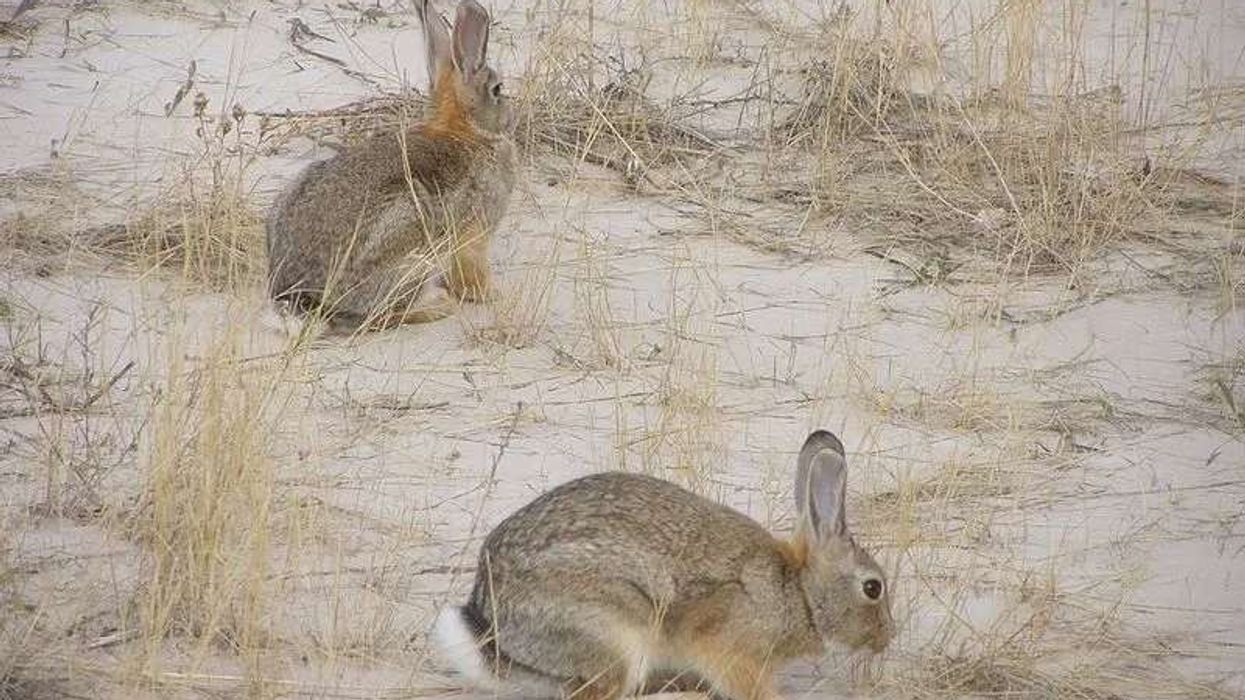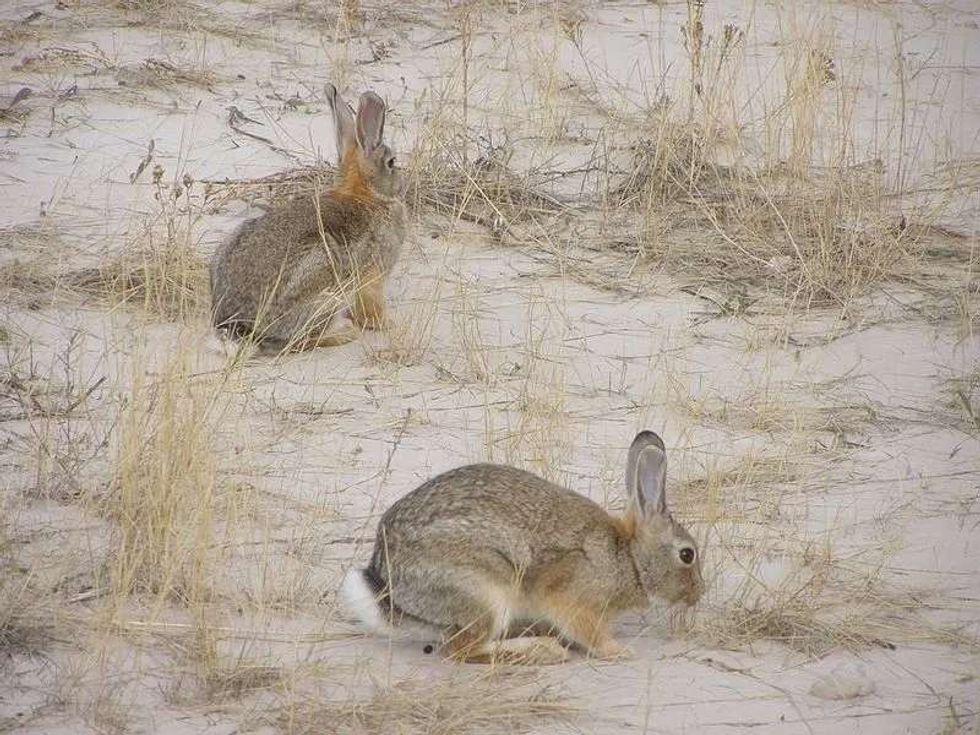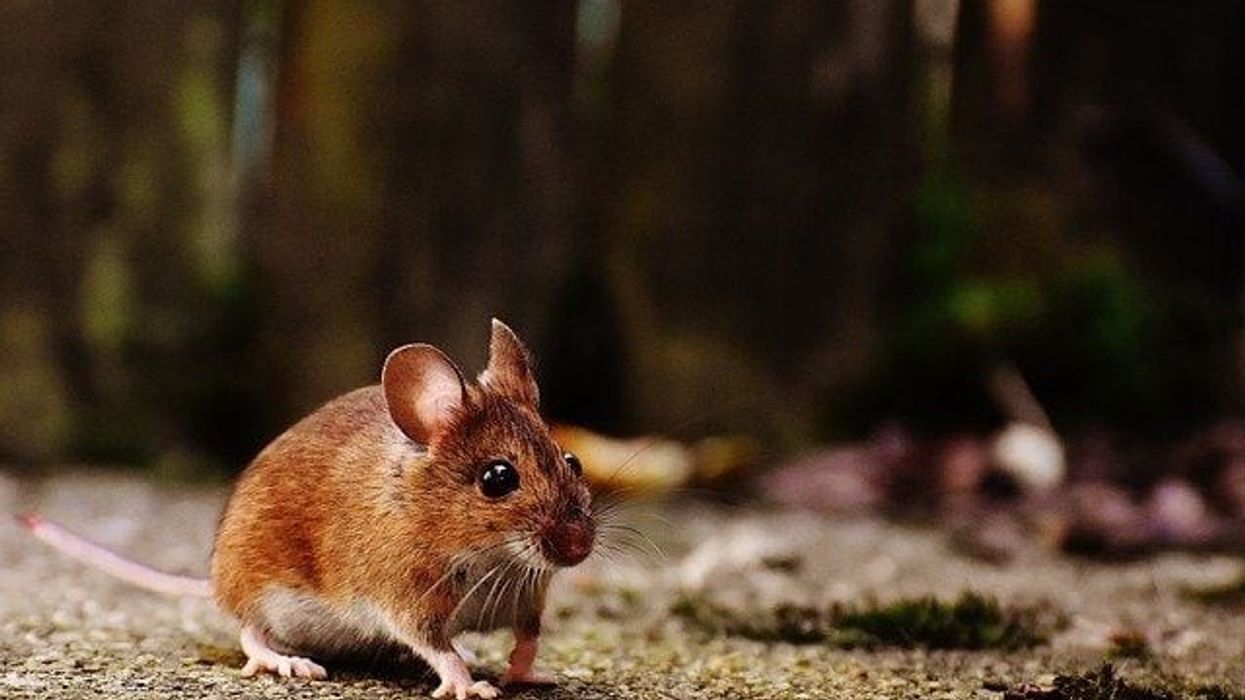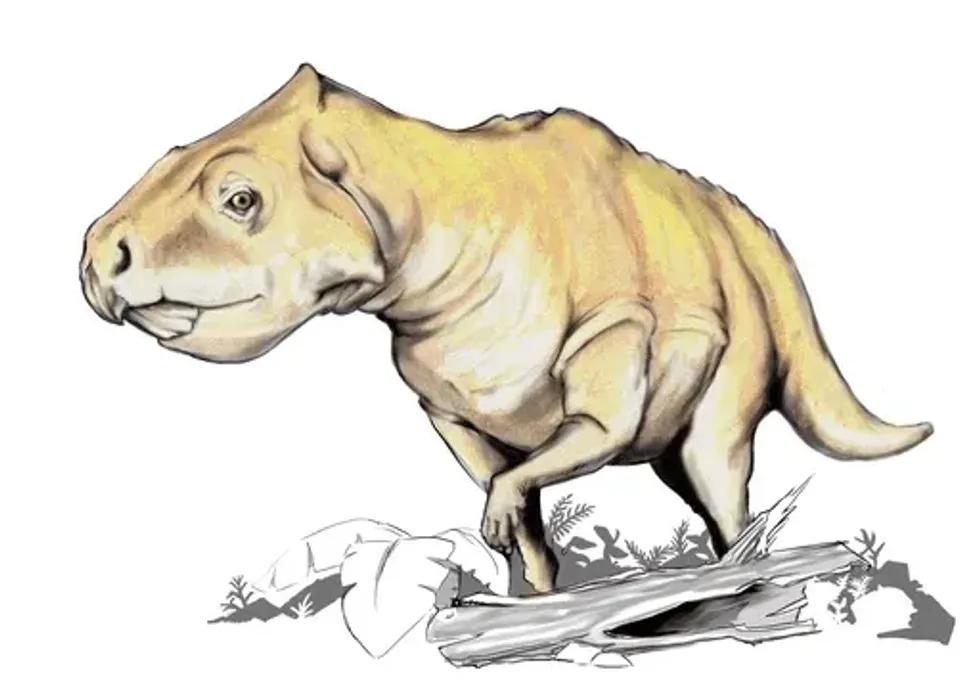Not all rabbits are adorable and friendly! The Desert Cottontail (Sylvilagus audubonii), is one of the most aggressive rabbit species around.
They make their home range in locations such as California and are also sometimes called the Lepus californicus for it.
Though there is not much difference in the size of the older rabbits and the young litters, all of them leave the nest only early morning in their home range. They spend the rest of their day in their nest, sheltering from the harsh weather, and staying away from daytime predators.
Their most prominent feature is indeed the cotton-like tail, which many have described as looking like a 'cotton candy.' They can have a brown tail, or can be black-tailed, though the brown tail is more common against their already mottled fur.
Are you curious to know all about Desert Cottontail habitat, Desert Cottontail adaptations in diet and their babies, as well as the Desert Cottontail pet?
Then read on to know all about their life and habits in California, along with their grass diet, their average range, their quick feet, and everything about their black-tailed and other variations. Do also check out eastern cottontail and European rabbit facts too.
Desert Cottontail Interesting Facts
What type of animal is a desert cottontail?
The cottontail is a type of rabbit. The desert cottontail scientific name is the Sylvilagus audubonii.
What class of animal does a desert cottontail belong to?
Desert cottontails belong to the Mammal class.
How many desert cottontails are there in the world?
Due to a lack of research, there is no fixed number as to the population of this species.
Where does a desert cottontail live?
The cottontail lives in the desert. They hide in burrows and can survive in areas of extreme heat and cold with little food or water.
What is a desert cottontail's habitat?
Open upland woodland, sagebrush as well as other dry sand grasslands and shrublands, wetland habitats, and pinyon-juniper forests are all part of the desert cottontail range.
Who do desert cottontails live with?
Cottontails often gather in small groups to feed. But Eastern cottontails are solitary animals, and they tend to be intolerant of each other.
How long does a desert cottontail live?
The desert cottontail reaches adulthood in less than two years. This can change as per their location and the availability of food.
How do they reproduce?
The desert cottontail's breeding season lasts from April to August/September, during which time two to four litters of three young are born. The gestation period can be anywhere between 28-30 days.
Baby kittens are born blind, naked, and helpless. Young cottontails leave the nest when they're about three weeks old. Desert cottontails have many predators so only a few young survive to adulthood.
What is their conservation status?
The desert cottontail's scientific name is Sylvilagus audubonii. The IUCN Red List has classified this species as Least Concern. They do not appear on the federal or state lists of concerned species, so there is no reason to be concerned about its status at the present time.
Desert Cottontail Fun Facts
What do desert cottontails look like?
The cottontail is stocky, with colors such as red, brown, sandy, white, and others. It is short in appearance, with large hind feet, long ears, and a short, fluffy whitetail. The underside fur of the cottontail is white. There is a rusty patch on their tail.
How cute are they?
The desert cottontail is the most common rabbit breed in Arizona. Due to their mottled colors, they do not look so cute.
How do they communicate?
The desert cottontail may repeatedly hit the ground with its back feet or raise its short tail as a signal to others of a likely threat. They also communicate by thumping their hind feet on the ground.
If they are captured, they will let out a high-pitched scream, and they also make other sounds with their voice in such situations.
How big is a desert cottontail?
Eastern cottontail rabbits have an average shoulder height of 17.8-22.9 cm, body length between 38-45.7 cm, and average weight in the range of 1.5-2.6 lb. To compare, a jackrabbit is a type of hare while a cottontail is a rabbit. The jackrabbit is slightly larger than the cottontail.
How fast can a desert cottontail run?
Desert cottontails are very fast, reaching speeds of more than 19 mi/h (30 km/h). They tend to sprint in a zigzag pattern powered by their hind feet to escape the predator's sight.
The jackrabbit can reach speeds up to 40 mi/h while the smaller rabbit can attain speeds up to 20 mi/h. Both use the zigzag pattern when running to confuse their predators.
How much does a desert cottontail weigh?
The weight of an adult is very from 1.5 to 2.6 lb.
What are their male and female names of the species?
The male species' are referred to as a buck and the female species as a doe.
What would you call a baby desert cottontail?
We can call a baby desert cottontail rabbit a kitten or bunny. They are usually born in a nest of plants and grass and fur and are born blind. On the other hand, the young jackrabbit is fully furred with open eyes.
What do they eat?
The desert cottontail diet includes a wide variety of plant foods including grasses, sedges, plants, leaves, fruits, buds, and bark. During the summer season, cottontails feed on and eat grasses, succulent annuals, legumes, weeds, as well as the occasional garden vegetable. Their habits involve being opportunistic feeders and also eat fruits, seeds, roots, buds, and tree bark found plants.
They are often inactive throughout the day but can be seen foraging in the early morning and early evening. Desert cottontails do not dig their own burrows; instead, they use the unused burrows of other species.
On windy days, desert cottontails are occasionally seen leaving their burrows in search of food because the wind hinders their capacity to detect incoming predators.
On the other hand, cottontails are preyed upon by a number of predators. Natural predators of the cottontail are coyotes foxes, bobcats, badgers, red-tailed hawks, golden eagles, and more.
Are they friendly?
Cottontails can build connections with different rabbits, rub noses as a means of greeting, rest in their vicinity, groom them and be groomed, and learn their behavior. Not all cottontails will perform all of these things, but they can socialize with, and trust other rabbits.
However, they do not trust humans and other species because they might be a potential predator.
Would they make a good pet?
Several types of rabbits make good pets. These include white rabbits and other domesticated rabbits too. However, cottontail animals are not one of them.
They can harm their handlers. They are easily stressed and can not live a comfortable life in captivity. Because of these reasons, it is not suitable to attempt to try making a pet of a cottontail rabbit, even if it is the comparatively more docile female.
Did you know...
This black-tailed species is one that does not need to drink a lot of water because they get all the moisture they need from the food they eat.
Due to the different temperatures of living conditions, desert cottontails must thermoregulate to minimize water loss during the hotter seasons.
In the case of the brush rabbit vs desert cottontail, the brush rabbit is typically smaller, its legs are slightly shorter, and it has a coat that's more uniform and grayish than the desert cottontail.
How do desert cottontails survive in the desert?
They pant to compensate for evaporative heat loss, and their paws, which account for 14% of their body size, can also aid in thermoregulation. Rabbits do not sweat; instead, they lose body heat by breathing and air circulation across their bodies.
A rabbit's ears also aid in body temperature regulation. When a rabbit's temperature is elevated, the blood vessels in his ears dilate, and the blood supply into his ears increases.
Cottontails find refuge in thickets, brush, and grasses. They shelter in depressions under grasses or brush in the hot part of the day.
They will also hide in the nests of other species, such as squirrels. This is why they can tolerate exceptionally high temperatures of about 45 °C for a brief period of time in open desert areas.
What was the desert cottontail used for by Native Americans?
Native Americans in the American Southwest hunted or captured cottontails for feed, made the fur into blankets and coats, used the hide to create a glue substitute, and made pouches out of individual hides. Cottontails make for excellent food. You can braise them, grill them, and bake them. In many states, you can legally hunt cottontails.
Here at Kidadl, we have carefully created lots of interesting family-friendly animal facts for everyone to discover! Learn more about some other mammals including the brown hare, or snowshoe hare.
You can even occupy yourself at home by drawing one on our Desert cottontail coloring pages.










